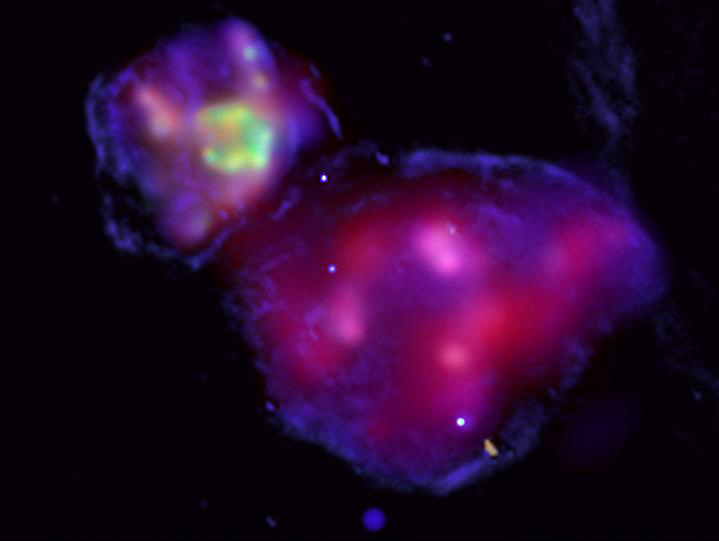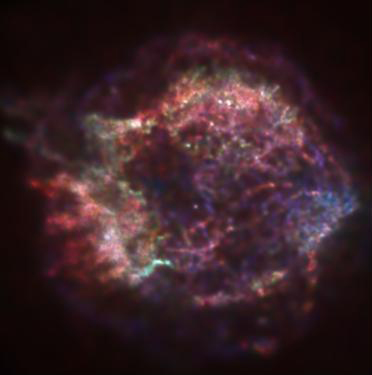Type II and Type Ia Supernovas
Type II supernova events – core collapses of massive stars – are more common than Type Ia events – the thermonuclear explosion of white dwarfs. The progenitor stars for Type II supernovas exist for a much shorter length of time. The initial mass of a star determines its evolutionary history; the more massive the star the more rapidly the core hydrogen is fused into helium – and when all the core hydrogen is fused the stage is set for the eventual collapse of the star. The entire process takes from ~70 million years for a six solar mass star to ~500 million for a two solar mass star. Type Ia supernovas occur when a white dwarf exceeds Chandrasekhar’s Limit. A white dwarf is the end product of a mid-sized star such as the sun, and from protostar to white dwarf takes ~10 billion years. The universe is ~13.7 billions years old; therefore fewer mid-sized stars have had time to evolve into white dwarfs than massive stars have had to collapse into neutron stars, pulsars, magnetars or black holes.
The composite X-ray (red and green)/optical (blue) image of DEM L316 reveals an image produced by the remnants of two exploded stars in the Large Magellanic Cloud galaxy. The upper remnant is a Type Ia event and the lower remnant is a Type II event. It takes billions of years to form a white dwarf star, whereas a massive young star will collapse in a few million years. The disparity of ages for the progenitor stars for these two remnants means that it is very unlikely that the two events happened in close proximity. The apparent closeness of the two remnants is most likely the result of a chance alignment.How do scientists determine if a supernova remnant is the result of a core collapse of a massive star or the thermonuclear destruction of a white dwarf? In DEM L316 one indicator is the large amount of iron in the upper Type Ia remnant compared to the amount of iron in the lower Type II remnant. The composition of supernova remnants is determined by analyzing their spectra. The elements and their relative abundances are different for Type Ia and Type II remnants because the progenitor stars are different. Type Ia remnants – from white dwarfs – usually show relatively strong Si, S, Ar, Ca, and Fe, and weak O, Ne, and Mg lines; Type II remnants – from massive stars – generally have the reverse pattern. In addition to the composition of the ejecta, spectroscopy can show how much of the stellar material was convectively mixed during the supernova event by calculating the density and temperature of the ionizing gas that generates the spectral lines. However, spectroscopy of supernova remnants is not clear cut and drawing conclusions is complicated; it is sometimes difficult to determine if a remnant is Type II or Type Ia. The Chandra and XMM-Newton missions have inaugurated the era of true spatially resolved X-ray spectroscopy. For supernova remnants, this means the capability to measure, for the first time, the detailed distribution of the ejecta and the spectra of ejecta at different positions in the remnant. This capability is greatly increasing our knowledge of the dynamics and processes involved in stellar catastrophic events. Chandra has detected numerous pulsars and their associated pulsar nebulas. These discoveries are proving to be one of the best ways to identify supernova remnants produced by the core collapse of a massive star, and distinguish them from Type Ia supernova remnants.




